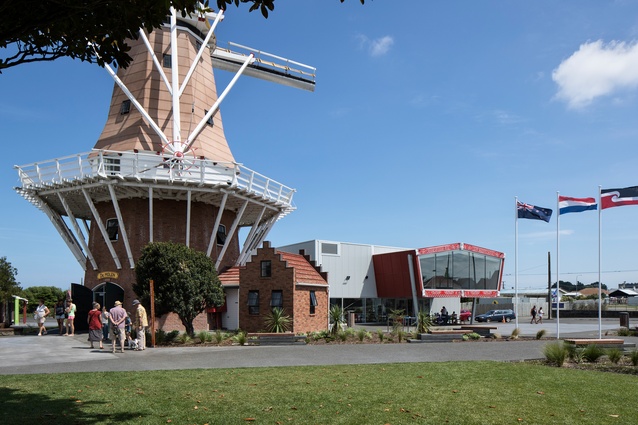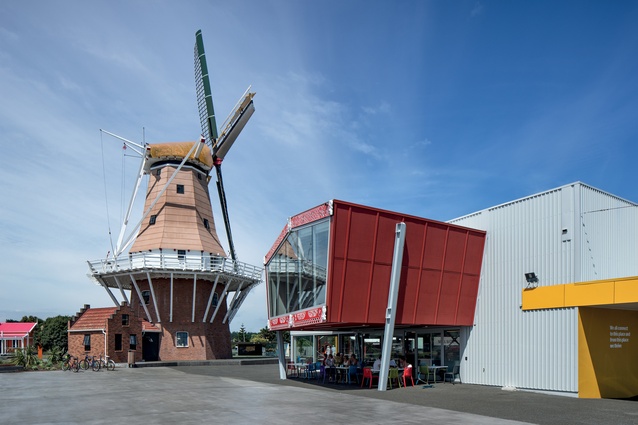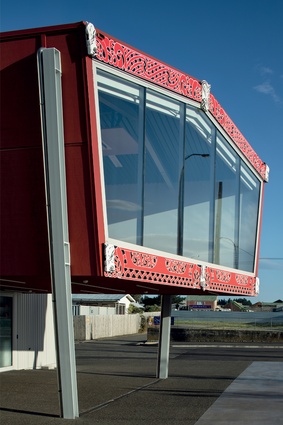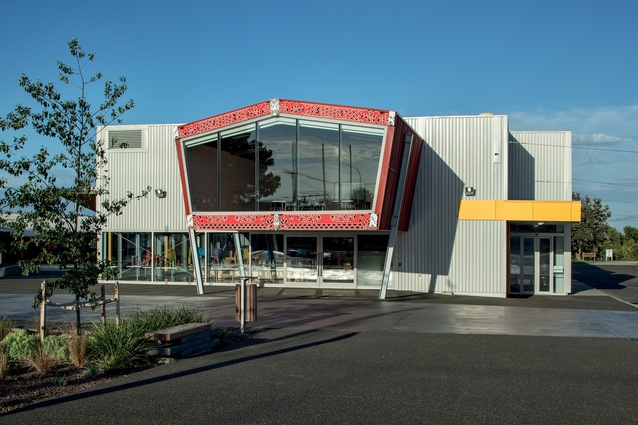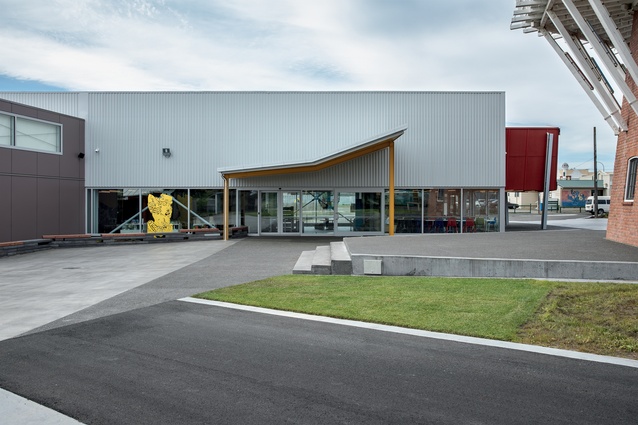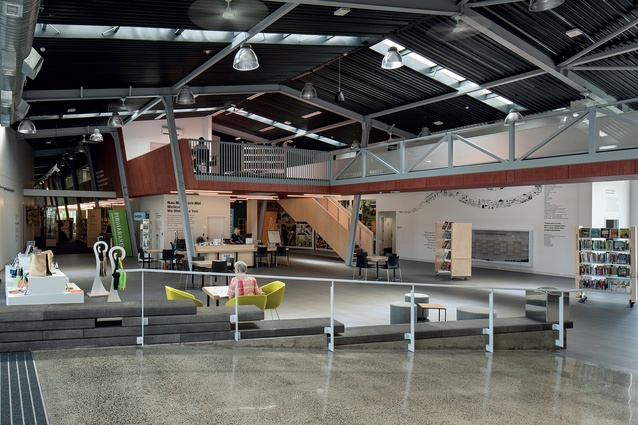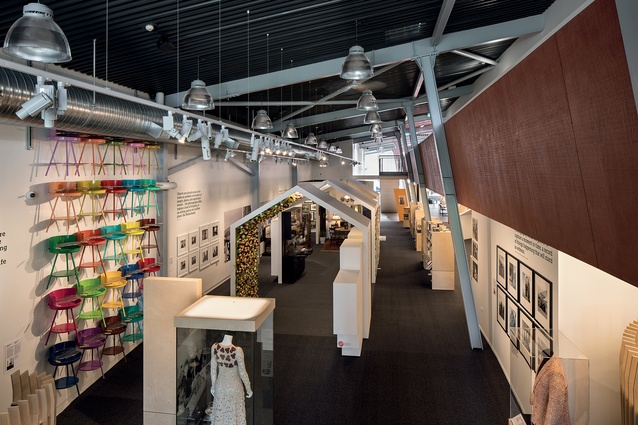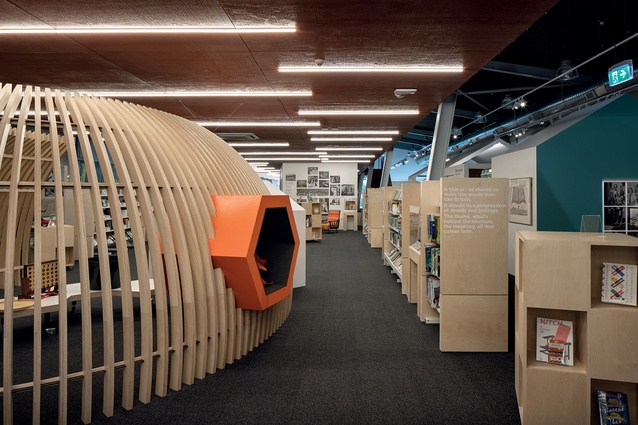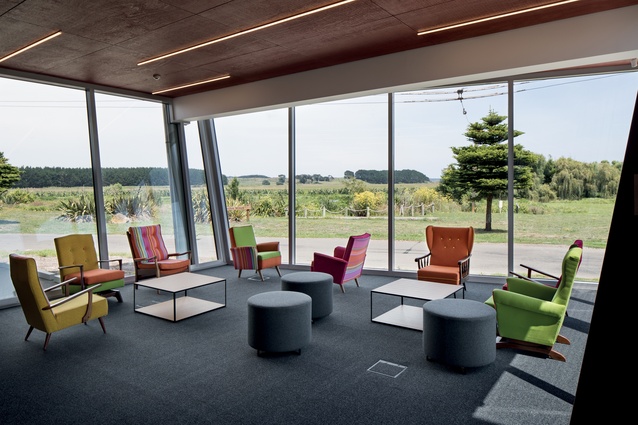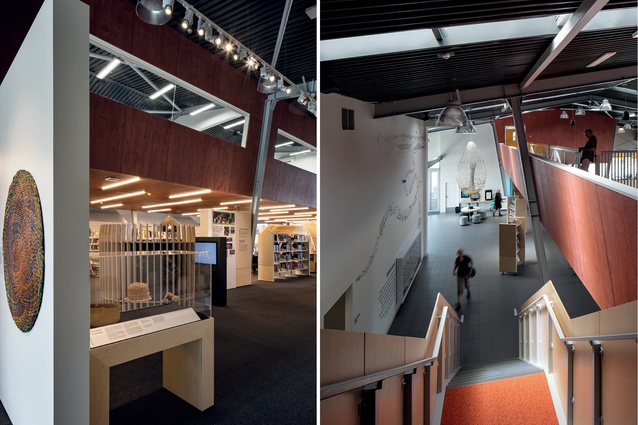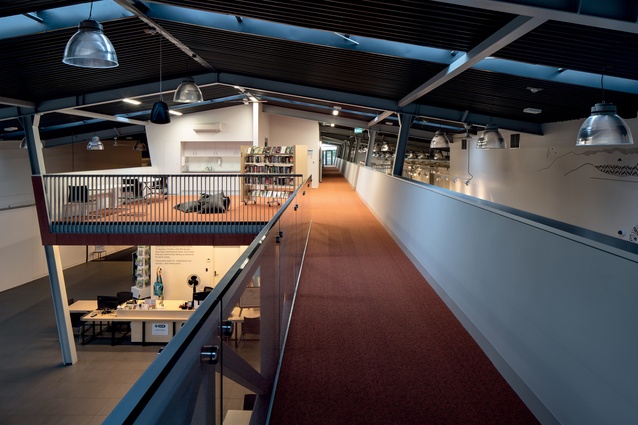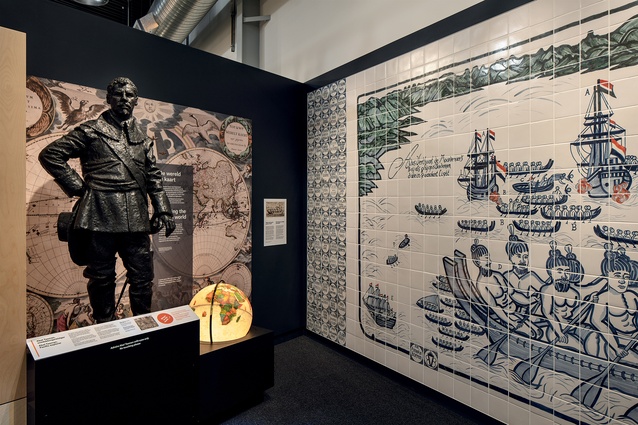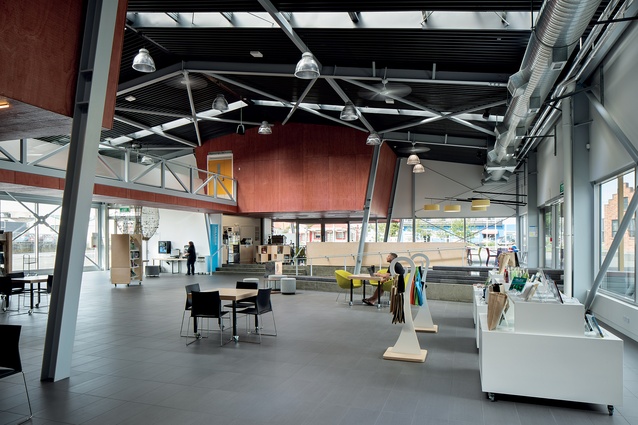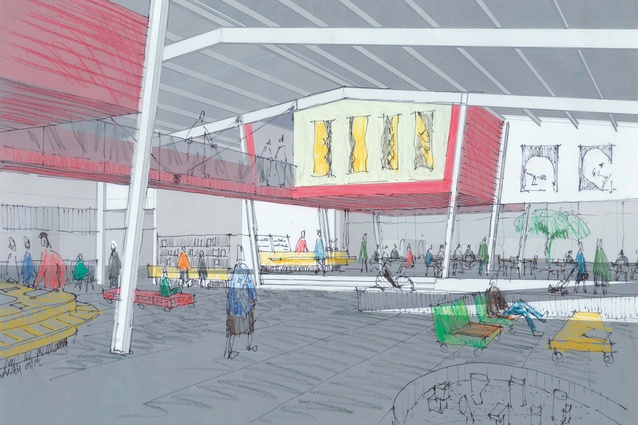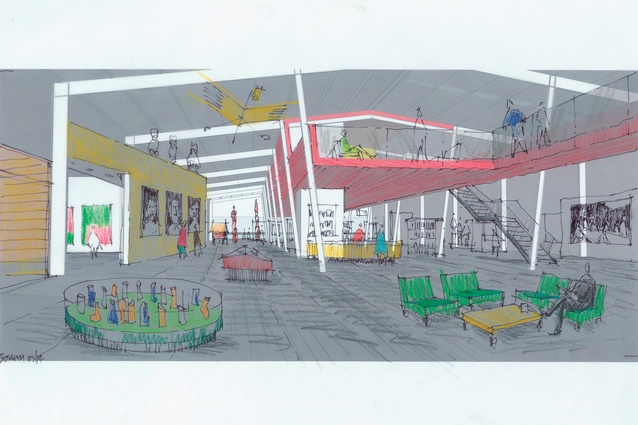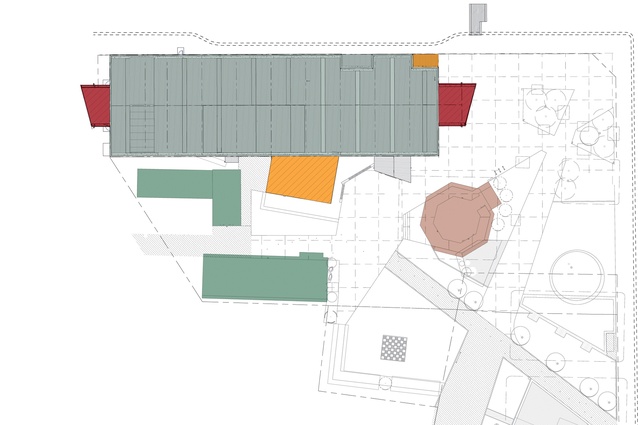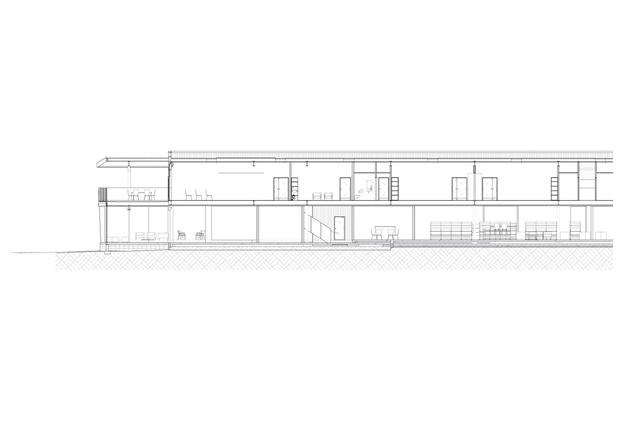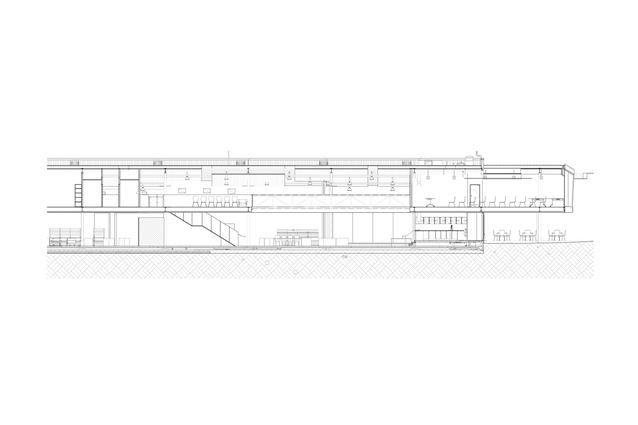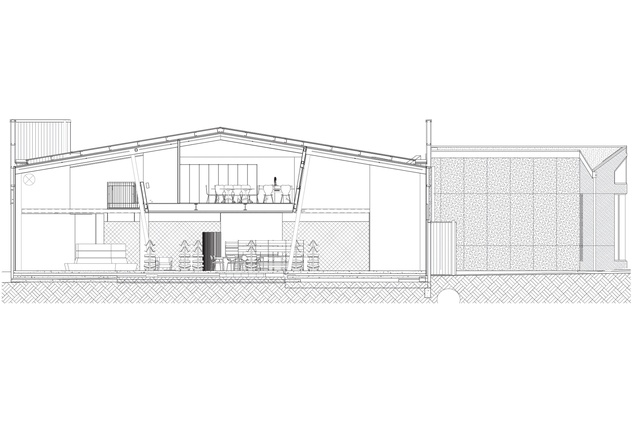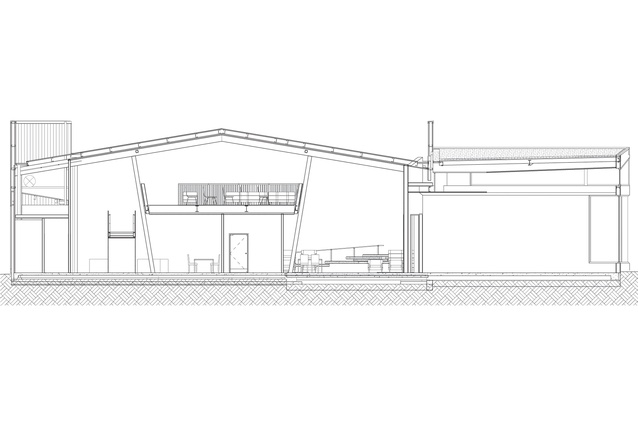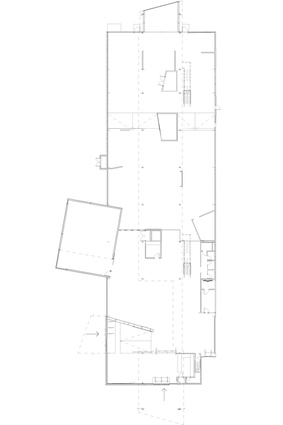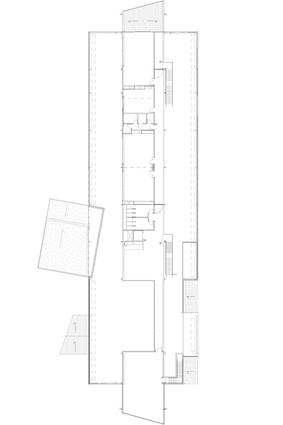Trilingual: Te Awahou Nieuwe Stroom
Bossley Architects has designed the only trilingual museum in Aotearoa: part of a modest-but-vibrant, multi-purpose community hub in the Horowhenua town of Foxton. A story presented in three languages:
Foxton or Te Awahou, as it is known to the locals, was a truly flourishing hub for Ngāti Raukawa ki Te Tonga. From the 1870s, a burgeoning flax industry saw up to 25 individual flax-working mills; ships from Sydney sailed up the Manawatū River, loaded up with flax and departed back across the Tasman. Māori enterprise flourished.
But things took a turn for the worse with the redirection of the Manawatū in the 1940s, leaving the river loop on which Foxton sat almost empty of flow. Local work dried up along with the river and, for a few decades, things were looking pretty grim. Even the luridly coloured, locally named, super-bubbly soda pop drink, Foxton Fizz, has left town and is made up north these days.
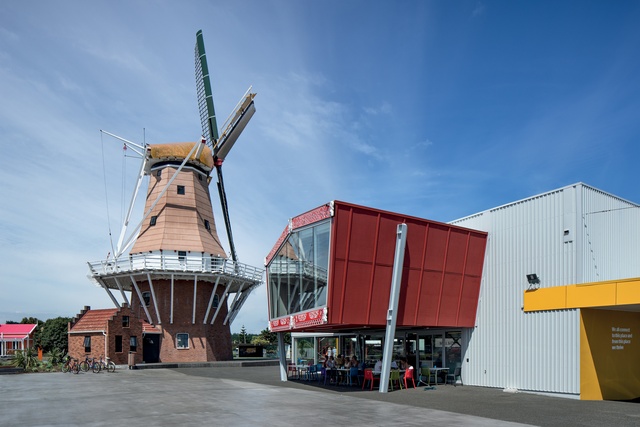
Ko Foxton te ingoa o te tāone e tū nei ki te rohe o Te Awahou, he kāinga nui o Ngāti Raukawa ki Te Tonga. Nō ngā tau 1870 i nui ai te mahi harakeke, kia 25 ngā mira mahi harakeke. He kaipuke nō Poihākena i tere ai i te awa o Manawatū hei hari atu i te harakeke ki Ahitereiria. He pakihi Māori i hua ake. Heoi, nō te whakahuringa o te awa i te tekau tau 1940, ka mimiti te wai i Piriharakeke (te koromeketanga o te awa). Ka ngaro ngā mahi o te tāone, pēnei i te mimiti o te wai, ā, mō tētehi wā ka tū tahanga te kāinga nei. Tae noa ake ki ngā inu karakara mirumiru, a Foxton Fizz, i whakarere i te tāone, i haere whakateraki ai.
Things started to change when two locals, Jan Langen and Cor Slobbe, decided to build a windmill. Not a huge, white, spinning, electricity-generating thing that makes money for jam but a simple, working, genuine, old-time, Dutch-style brick windmill, which makes flour for bread. It took a while to fund-raise and build, and for De Molen to start spinning, but its completion in 2003 really did put Foxton back on the map again.
Nō te whakatau a ētahi tāngata tokorua o Te Awahou ki te whakatū pūrere kapo hau i whati te tai. Ehara i te pūrere kapo hau, mā, hurihuri, mahi hiko, e maringi noa mai ai he herengi, engari he pūrere kapo hau, Tati tuturu, kua hangaia ki te pereki hei mahi parāoa puehu. Ka roa te wā ki te kohi pūtea, ki te hanga, kia rere ai, engari nō te whakatūnga o te pūrere kapo hau i te 2003 i puta anō ai te rongo o Te Awahou.
Alles veranderde toen twee Nederlanders in het dorp, Jan Langen en Cor Slobbe, besloten een molen te bouwen – vlak langs de hoodfdstraat. Niet zo’n lelijk wit gestroomlijnd modern ding dat rondraast om vooral veel geld te verdienen, maar een statige molen volgens 17e eeuws ontwerp. Gewoon om graan te malen. Het kostte Jan en Cor zo’n 10 jaar om het geld bij elkaar te spijkeren en de wind in de zeilen te krijgen, maar in 2003 stond Foxtons molen er eindelijk majesteitelijk te staan.
Now it has been joined by a curious new building, masterminded by the guru of the monolithic, labyrinthine Te Papa: Pete Bossley. Te Awahou Nieuwe Stroom is a museum quite unlike any we have ever seen before in this country. For a start, it’s trilingual – Māori, Dutch and English. As it is probably the only trilingual museum in Aotearoa, I thought it would be a fantastic gesture for this review to be trilingual as well.
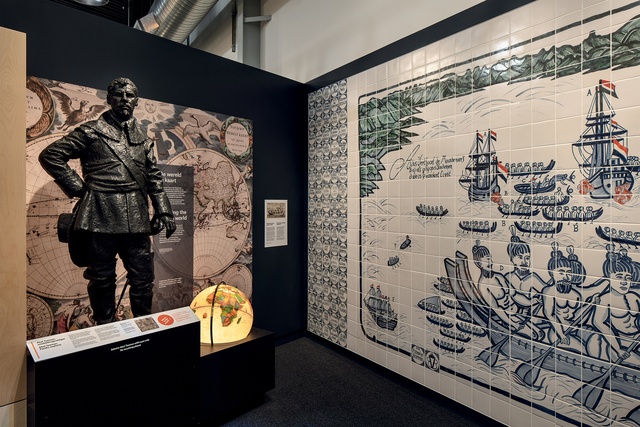
Nā, kua whai wāhi mai tētehi whare kē, i waihangatia mai e te tohunga o te pā whakahirahira a Te Papa, e Peter Bossley. He whare pupuru taonga a Te Awahou Nieuwe Stroom kāore anō tana momo kia kitea i tēnei whenua. Hei tīmatanga ake, e toru ōna reo, Māori mai, Tati mai, Ingarihi mai. Na te mea, ko ia anake te whare pupuru taonga reotoru i Aotearoa nei, i toko ake te whakaaro me reotoru hoki tēnei pūrongo.
Onlangs is er een curieus centrum geopend vlak naast De Molen. Het brein achter het ontwerp is Pete Bossley – verantwoordelijk voor Te Papa en een reeks andere culturele gebouwen. Te Awahou Nieuwe Stroom is een museum dat zijn weerga niet kent in Nieuw-Zeeland. Het is bijvoorbeeld ingericht als een drietalige ervaring voor de bezoekers.
The genesis for the building was two-fold: from an exhibition 10 years earlier celebrating a local kuia, to the establishment of Piriharakeke Generation Inspiration Centre, housing taonga of local iwi Ngāti Raukawa ki Te Tonga and the treasures of the Dutch Connection Trust, gathered from émigrés hailing from the Netherlands, who were feeling almost at home in the flat, watery, green Manawatū landscape.
Later, when the local Horowhenua District Council realised that its library building was dangerously earthquake prone, it pitched in and joined the party. Funds were raised. Designers were hired. It has clearly been a labour of love for many concerned; Bossley notes the irony that the planning of this small regional museum took much longer than did the planning for Te Papa itself.
A nearby former Mitre 10 store that blocked the site from the river was gutted and repurposed, with Bossley punching a long, extruded shape seemingly right through the length of the building. From the outside, this extrusion (a pātaka perhaps?) appears quite clearly as a place of local Māori culture, with polychromic carved bargeboards and the (fox-coloured?) reddish-brown hue drawing your eye along, beckoning you inside.
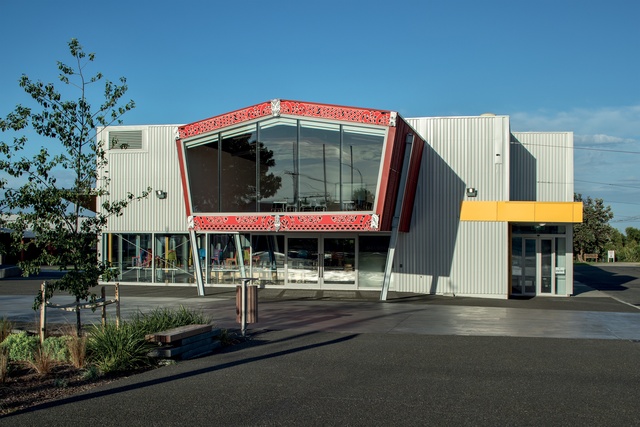
Ko te kākano o te whakaaro i ahu mai i ngā take e rua: He whakaaturanga toi i tū i te tekau tau i mua, e whakanui ana i ngā mahi a tētehi kuia o Te Awahou i tū ai a Piriharakeke Generation Inspiration Centre, hei whare pupuru i ngā taonga o Ngāti Raukawa ki Te Tonga, me ngā taonga o Te Tarati Hononga Tati, he mea kohi mai i te hunga i heke mai i Hōrana, e noho mauri tau nei ki ngā mānia waiwai o Manawatū. Nō muri mai, i te kitenga atu a te Kaunihera-ā- Rohe o Horowhenua e noho mōrearea ana te whare pukapuka ki ngā rū whenua, ka whakapiri rātou. Ka kohia ngā pūtea. Ka whakaritea ngā kaihoahoa. E kitea ana he kaupapa kaingākau tēnei ki te hunga nā rātou ngā mahi: e mea ana a Bossley he roa kē atu te whakatū o tēnei whare i tērā o Te Papa. Ko te whare tawhito o Mitre 10 e ārai nei i te awa, i tuakina, i whakahoungia, nā Peter Bossley tētehi āhuahanga putanga roa i whakauru mai i te roanga ake o te whare. Mai i waho, ko te putanga (he pātaka pea?) he tino Māori tōna hanga, ngā maihi me ōna tini tae, me te (te tae o te pōkiha?) whero e mau ai te whatu, e whakapoapoa ai i te tangata ki roto ki te whare.
You’re greeted by the Millside café, where a few foxy Foxton people sit and eat cake. The red outline of the aerial pātaka continues overhead. It’s spacious and modern. As you explore further, you realise that there are artistic and historic displays interspersed with the books, and you realise that it is not just a library but a museum and a children’s discovery centre also. There are meeting rooms for local painting classes, carvings, etc.: a true town centre.
What’s more, you discover that one side of the building, resplendent with Dutch heritage, is fully bilingual in Dutch and English while the other side is bilingual in English and te Reo for the rich history of Ngāti Raukawa. At the end of the building, the upstairs turns into a large, sunny outdoor deck, overlooking the riverside and making that crucial link between town centre and what was the old wharf edge.
The former big-box shed itself is clean and functional, the only quirk being the angled columns supporting the pātaka shape above. Inside, the fittings are tasteful charcoal greys and whites, with a strong accent on CNC-cut plywood shapes to enclose and entrance the small children running wild.
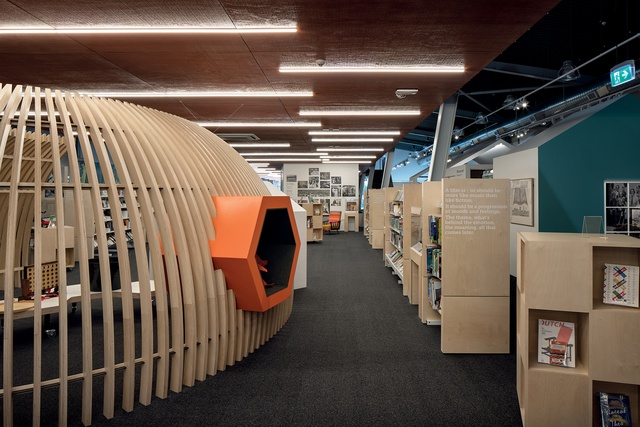
The fit-out is sparse though, with room for much more to be installed over the coming years, I hope. Displays of traditional Dutch bikes and traditional Māori poi sit comfortably beside displays of the latest books and local histories. Side rooms offer snippets of commentary and films on the past and the future of Foxton, and how much the New Stream is giving the place a New Energy it requires.
Despite the input of the local Council, the building project was obviously constructed on a pretty tight budget but the displays are great. They’re well put together, informative and interesting, and they taught me a great deal about Dutch history in Nieuwe-Zeeland from Abel Tasman onwards to Suzy van der Kwast’s ‘Coffee Lounge’ in Wellington (oh Suzy, whatever have you started!). They are equally informative about the local iwi, their culture and their flax-weaving initiatives that were once shipping across the Tasman.
Fietsen en oudhollandse klederdracht staan netjes tentoongesteld naast Māori poi en een waka, en de geschiedenis van Foxton. Kleine nisjes laten videos zien over het verleden, Nederlandse immigranten en de toekomst van Foxton. Nieuwe Stroom betekent hier letterlijk: Nieuwe Energie!
Het budget was bescheiden, maar de initiatiefnemers hebben goed met ruimte en tentoonstellingen gewoekerd. Alles zit perfect in elkaar. Ik heb enorm veel geleerd over Abel Tasman en Suzy van der Kwasts ‘Coffee Lounge’ in Wellington (Oh Suzy, kleine dingen hebben grote gevolgen…!). Maar je vindt net zo veel informatie over de plaatselijke Iwi, de cultuur en hun gewoven vlas dat ooit over de Tasman Zee naar Australië werd verscheept.
Basket-weaving remains a key cultural strength within Māoridom and the Whare Manaaki still exists next door, with displays and workshops about local history and culture woven together through weaving and carving. The centre is weaving an energy back into town – a small project, in a small town, on a tight budget but with big ambitions. It is well worth supporting. Around 10,000 people crowded into the town on opening day: not bad for a town of 4,500! The rebirth of Foxton is well under way.
Translations provided by Arjan van der Boon, Te Atawhai Kumar and Philippa Devonshire.

